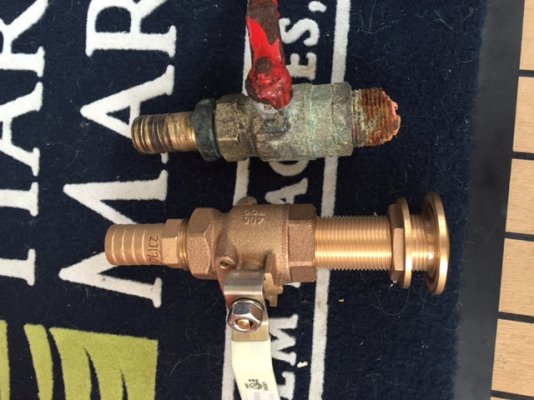HopCar
Guru
- Joined
- Aug 20, 2011
- Messages
- 5,308
- Vessel Name
- Possum
- Vessel Make
- Ellis 28
FF I stand by my statement. It is pretty rare for thru-hull fittings to break. If it was a common problem the ABYC wouldn't approve the type of installation we're discussing.
Note that I said rare, not never.
I feel that a flanged seacock bolted to a backing block that is bonded with epoxy to the hull is an excellent installation. Through bolting adds a little strength and puts three more holes in the hull. Don't forget that the bronze thru-hull itself acts as a big bolt to secure the seacock to the hull.
Note that I said rare, not never.
I feel that a flanged seacock bolted to a backing block that is bonded with epoxy to the hull is an excellent installation. Through bolting adds a little strength and puts three more holes in the hull. Don't forget that the bronze thru-hull itself acts as a big bolt to secure the seacock to the hull.



